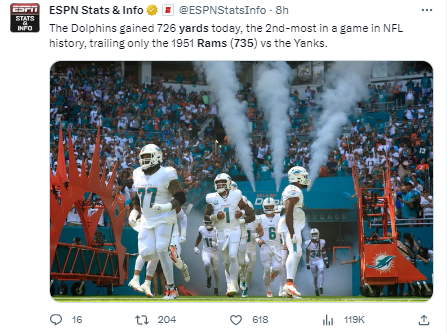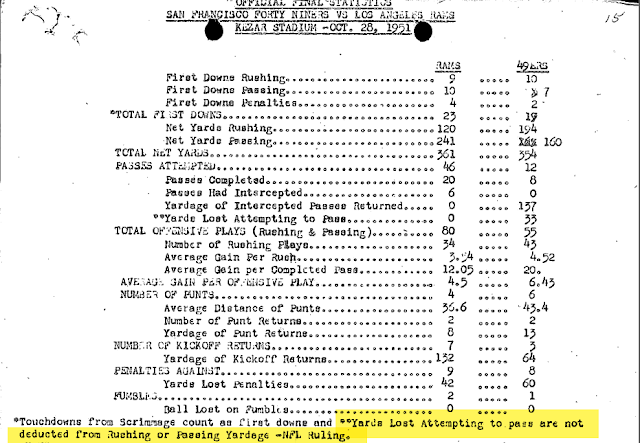By Eric Goska
 |
| The Lions are 3-1 for the first time since 2017. (photos by Eric Goska) |
These cats can pounce!
The Lions jumped on the Packers early and often Thursday
night at Lambeau Field. Striking with surprising ease, they buried their
longtime rivals 34-20 to claim sole possession of first place in the NFC North
Division.
Detroit (3-1) and Green Bay (2-2) have been scrapping for 90
seasons now. This latest matchup – in prime time, no less – was the 186th
regular-season meeting between the two.
That the Pack had 103 wins to 75 for the Lions – there have
been 7 ties – mattered not. The Lions so effectively toyed with their prey that
they led 24-3 early in the second quarter.
A snapshot of the game to that point underscores Detroit’s
superiority. With just 16 minutes, 41 seconds having elapsed, the Lions had
outgained the Packers in yards (206 to 1), first downs (10 to 0) and time of
possession (12:10 to 4:31).
Ugly doesn’t begin to describe what transpired. Green Bay produced
positive yards on just 3 of 10 snaps, its longest gain a mere 9 yards. Detroit moved
forward on 19 of 25 opportunities, six times amassing more than 10 yards on a
single play.
Jared Goff hit TE Sam LaPorta for 35 and WR Amon-Ra St.
Brown for 24 and a score. The quarterback connected twice with WR Josh Reynolds
for 23 and 26.
Kalif Raymond shook loose for 40. Even Goff, not a picture
of mobility, scrambled for 11 to set up David Montgomery’s 3-yard plunge that
put the Lions up 14-3.
The Packers didn’t attain 200 yards until late in the fourth
quarter, getting there after Jordan Love connected with Samori Toure for 35.
That drive ended two plays later with Love’s second interception of the night.
 |
| Tony Gonzalez and Ryan Fitzpatrick mingled with fans at the base of the Vince Lombardi statue outside Lambeau Field. |
The Green and Gold have played more than 1,400 regular-season games since 1921. Thursday was just the seventh time an opponent scored 24 or more points against them in the first 20 minutes of a contest.
Detroit became the first to post such a total in under 20 at
Lambeau Field.
Hanging 24 first-half points on Green Bay is rare enough. It
has happened 66 times with the Green and Gold sputtering to a 4-62 record in
those games.
Getting there in under 20 is almost unheard of. The previous
six to do so – Vikings (11:26 in 1986), 49ers (12:32 in 1958), Cardinals (12:43
in 1949), Rams (14:28 in 1953), Colts (16:17 in 2004) and Dolphins (18:20 in
1988) all erupted on their home turf.
Not so the Lions. They exploded for 24 in just 16:41 to snap
the Lambeau Field record held by the Titans. On Oct. 11, 2004, Tennessee moved
in front of Green Bay 24-3 with 20:33 elapsed in winning 48-27.
In piling on so early, the Lions all but ensured victory. Detroit
is unbeaten (12-0) when tallying 24 or more first-half points against the
Packers.
The Packers and Lions are slated to meet again on
Thanksgiving. Could the Green and Gold return the favor and drop 24 on Detroit in
under 20 minutes?
Don’t count on it, even though Green Bay has done it three
times in the past. Those Lions teams (4-11 in 1987, 5-11 in 1992 and 9-7 in
2016) did little to excite. This club helmed by Dan Campbell appears far more formidable, one capable of claiming a division title for the first time in 30 years.
The 10 opponents who tallied 24 or more points in the first half of a regular-season game at Lambeau Field. (ET = elapsed time)
16:41 Lions Sept. 28, 2023 GB lost, 20-34
20:33 Titans Oct. 11, 2004 GB lost, 27-48
23:43 Jets Dec. 3, 2006 GB lost, 10-38
25:17 Vikings Oct. 5, 1998 GB lost, 24-37
28:28 Bears Dec. 12, 2021 GB won, 45-30
28:33 Giants Sept. 19, 1971 GB lost, 40-42
29:34 Vikings Dec. 8, 1973 GB lost, 7-31
29:49 Colts Nov. 6, 2016 GB lost, 26-31
29:56 Giants Nov. 3, 1957 GB lost, 17-31
30:00 49ers Oct. 15, 2018 GB won, 33-30














.jpg)








































